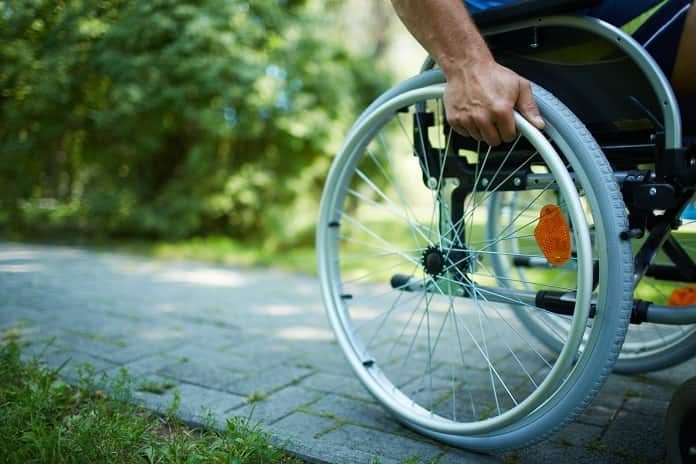Loss of bladder control is common after spinal cord injuries. A new study published in Scientific Reports provides proof of concept that the therapeutic use of magnetic stimulation to the lower spinal cord can be used to improve voluntary bladder control.
The spinal cord is a long, fragile column of nerves that runs down the center of the spine. As part of the central nervous system, the spinal cord contains sensory and motor neurons that carry messages from the brain to the body. The cord is protected by vertebrae and doctors refer to sections of the spinal cord by the group of vertebrae surrounding it. For example, the section of the spinal cord which runs through the cervical vertebrae at the top of the spine is called the cervical spinal cord.
The thoracic spinal cord refers to the part of cord in the middle section of the spine where the thoracic vertebrae are located, and the lumbar spinal cord refers to the section of the cord that runs through the lower lumbar vertebrae.
Spinal cord injuries and urinary incontinence
If the spinal cord is damaged during an injury or accident, the degree of impairment depends on the location and severity of the spinal cord injury (SCI). It can cause temporary or permanent loss of sensation, voluntary motor functions and even autonomic functions such as breathing, digestion, and urination.
More than 80% of patients with SCI report losing the ability to urinate voluntarily. In order to empty the bladder and prevent damage to the kidneys, small tubes called Foley catheters are inserted through the urethra and into the bladder. If the SCI was in the cervical area and affected the use of the hands, the catheter must depend on a caregiver to insert or clean the catheter. As such, the loss of bladder control and the high risk for urinary tract infections (UTIs) associated with catheter use negatively impact a patient’s quality of life.
Transcutaneous magnetic stimulation (TMS)
Transcutaneous magnetic stimulation is a non-invasive, painless procedure in which electrical pulses are passed through a coil used to generate a magnetic field. Although relatively new, TMS has been used diagnostically to measure neural damage and to improve symptoms of depression.
In a recent proof-of-concept study published in Scientific Reports, neuroscientists from California investigated whether TMS could be used to improve bladder control in patients with SCIs. The hypothesis is that, despite the SCI, the spinal cord retains a weak, residual connection to the brain which can be amplified with TMS.
They recruited five individuals who suffered SCI 5-13 years prior and applied TMS to the spinal cord to access the neurons controlling urination. Each participant underwent 15 minutes of TMS each week for four weeks. After four sessions, each participant began to report improvement in bladder capacity and, by the end of four months, all reported regaining the ability to urinate voluntarily during stimulation. Further, lower self-catheterization frequency persisted for several weeks following the end of the TMS treatments. Self-reported quality of life was rated higher after treatment with TMS.
This study is important because it provides evidence that magnetic stimulation of the lower spinal cord through the skin can enhance the quality of life by reducing reliance on a catheter and increase independence for individuals who have suffered a spinal cord injury. Dr. Lu and the research team plan on conducting a second, larger study to investigate how different TMS patterns can alter neural activity in the spinal cord.
Written by Debra A. Kellen, PhD
Reference: Niu, T., Bennett, C. J., Keller, T. L., Leiter, J. C., & Lu, D. C. (2018). A Proof-of-Concept Study of Transcutaneous Magnetic Spinal Cord Stimulation for Neurogenic Bladder. Scientific reports, 8(1), 12549. DOI:10.1038/s41598-018-30232-z



